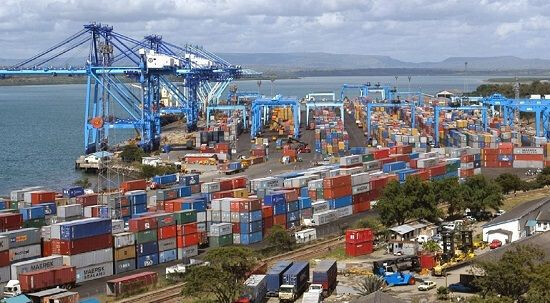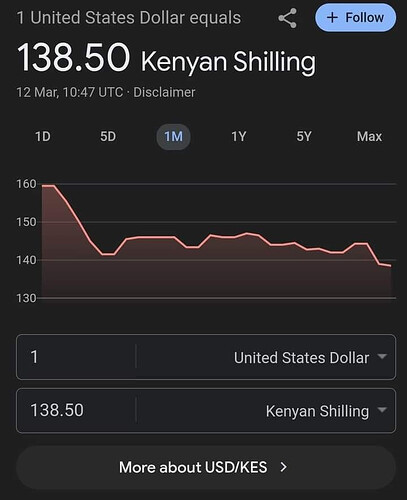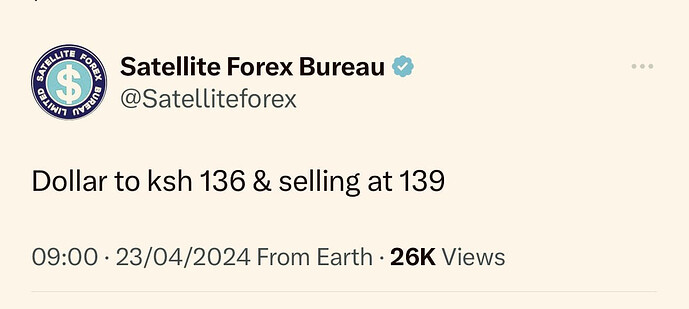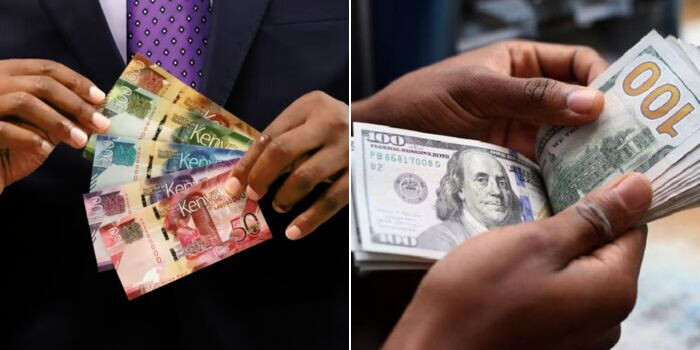Kenyans Warned of Increased Food Prices as Dollar is Predicted to Hit Record High
- by MAUREEN NJERI on Thursday, 7 March 2024
The Budget Options for 2024/2025 and Medium-Term Report have unveiled a concerning projection: the Kenyan shilling is anticipated to weaken against the dollar, despite its recent upturn.
According to the report, the shilling is forecasted to potentially lose up to 21 percent in value by the end of 2024. Consequently, it is expected to trade at approximately Ksh171 against the dollar. ![]()
“Experts have posited that shilling is likely to continue losing value for the better part of the year and may shed as much as 21 per cent of its value by the close of the year,” reads part of the report.
According to the report, this weakening will result from geopolitical tensions which will trigger capital flights in search of safer investments. Cases of terror attacks in the country may force foreigners out of the country.

Several shipping containers at the Port of Mombasa
Another reason identified is the ripple effect of the high US interest rates. On these interest rates, the Federal Reserve on February 27 revealed that the decline of the rates will be slow, shattering investors’ hopes.
Additionally, another reason is the rising cost of imports which will see the demand for dollars increase. Some main goods imported include fuel, food (including edible oils), and other raw materials.
The weakening of the shilling is poised to negatively impact the pricing of essential commodities, including food and fuel. This will further burden Kenyans already grappling with the elevated cost of living.
“A weak shilling implies that these goods will be substantially costlier, and this cost will be passed on to the consumer, thereby increasing the cost of living and perpetuating the decline in household consumption,” reads part of the report.
Notably, this increase in the cost of living will see more Kenyans limit their household consumption in 2024. The subdued consumer activity will also be attributed to the decline in incomes.
Kenyans will also be dealing with a higher tax burden in 2024 as the government introduces more taxes such as Social Health Insurance. ![]()
“Indeed, despite the cooling of inflationary pressures due to stabilized food and fuel costs, the knock-on effects from exchange rate depreciation
could substantially increase input costs and fuel costs, leading to higher production costs,” reads part of the report.
Despite the decline, the government has assured Kenyans of putting in place measures to see to it that the shilling continues to gain against the dollar and other foreign currencies.
“I want to assure Kenyans that we have the resources. We have the money that is coming from the international institutions and the risk of the Eurobond will be eliminated and that should contribute to the strengthening of the shilling,” Central Bank of Kenya Governor Kamau Thugge stated on February 7.
A report by the Parliamentary Budget Office (PBO) on the Budget Options for 2024/2025 and the Medium Term has revealed a worrying trend of foreign investors leaving the country.
Per the report released in February, Kenya risks losing these investors due to the reduced profits from the Nairobi Securities Exchange (NSE).
“The erosion of investor confidence and reduced capital formation stemming from the struggling stock market collectively contribute to a challenging economic landscape for businesses across sectors,” read part of the report.
In 2023, the NSE experienced a decline of 27.5 per cent, also over 6,000 foreign investors left the NSE in nine months.
[image]
This decline is a result of some investors pursuing higher returns and therefore moving to developed economies.
Jomo Kenyatta International Airport (JKIA)
Additionally, another reason for the decline in foreign investors is the increasing interest rate in Kenya and other developing countries. Interest rates were increased by the Central Bank of Kenya from 7 per cent to 12.5 per cent which will also influence investor decisions.
Also, another reason is the review of tax measures and a shortfall in revenue collection. These measures affect consumer behaviour and investor confidence in the country.
Cumulatively, these factors influence the business environment which results in long-term economic stability and growth projections.
According to the report, another reason is Kenya’s debt and the surging borrowing costs which makes long-term bonds more expensive. This has discouraged foreign investors.
“In the current global macroeconomic environment, the decline in international appetite for Kenyan government bonds is pronounced, with investors now demanding a premium to offset the perceived risks,” read part of the report.
In the report, Kenya was urged to adopt more measures to regain investor confidence which will subsequently boost the economic growth of the country.
Meanwhile, in another report, Quarterly Economic and Budgetary Review Report, from the National Treasury it was revealed that investors were moving from Kenya to the US and other nations.
This decline was attributed to global monetary policy tightening forcing investors to look for other safer areas.
In 2023, the Henley Private Wealth Migration Report 2023, 100 millionaires were reported to have left the Kenyan market in 2022 due to increased taxation.








